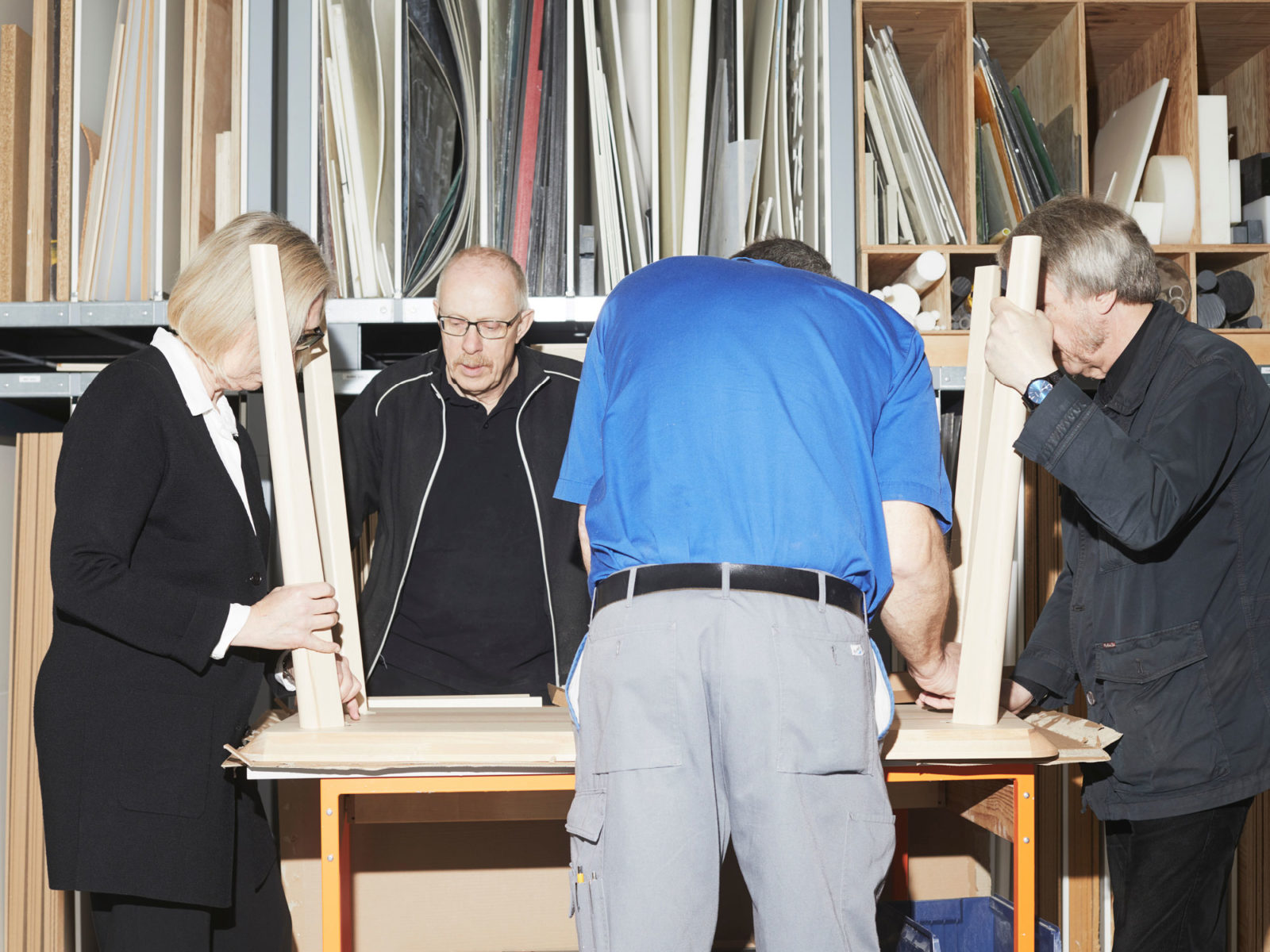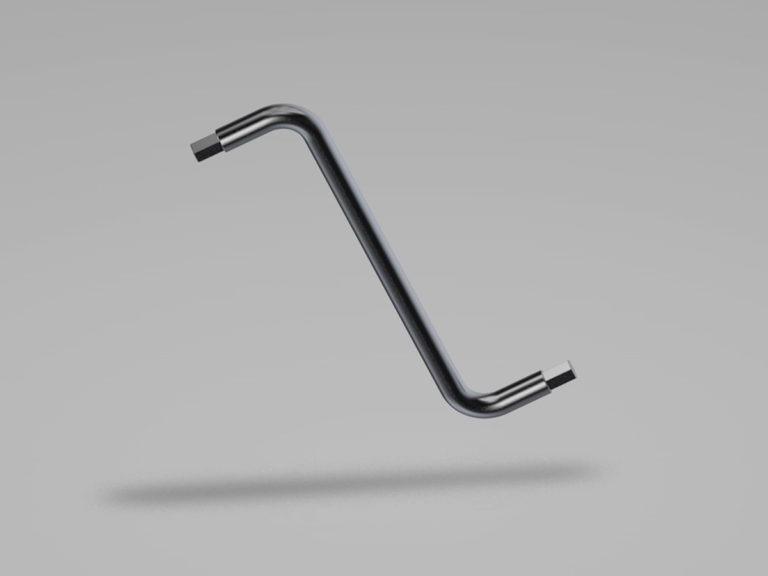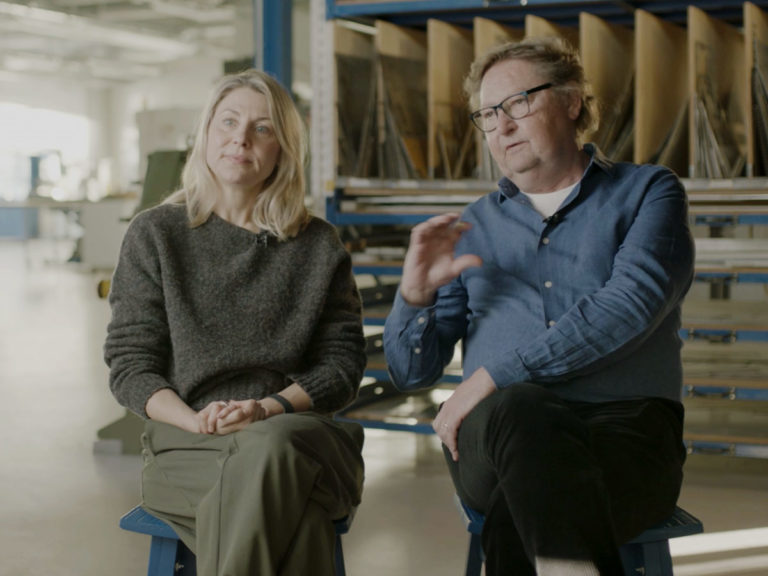Sometimes, innovations and development come from within. From someone’s strong belief that things can be done better. More cleverly. More easily. In a new way. In this case, this absolutely amazing innovation – the wedge dowel – came from the hearts and minds of the two self-educated prototype engineers Göran Sjöstedt and Anders Eriksson. Göran was hired after proving he could build a Windsor chair, and Anders is a cabinet-maker. They both worked in the prototype shop at IKEA of Sweden in Älmhult , where most prototypes are designed and built.
The Wedge Dowel
A mini revolution.
Innovation is one of the most, or maybe the most important part of a company’s survival. The guts to question what everyone else happily agrees on is a must. And while doing that, you need to be pretty stubborn. As in this case. Ten years after the idea first came to mind, it is now considered by many to be one of the cleverest things IKEA ever came up with – the wedge dowel. A wooden peg that wedges into a milled hole.

Stubbornness as a working method
The wedge dowel that Anders and Göran invented together is a solution that may not blow your mind visually, but from an innovation perspective it’s rather fantastic. Firstly, this tiny part cuts the assembly time of IKEA furniture by half. Secondly, all the fittings on machine-made furniture become invisible. Beauty and brains!
It all started when Anders Eriksson created a trestle with milled grooves. It was extremely sturdy, and it got him thinking.
“I was thinking a lot about its construction and wondered if you could apply this principle on furniture other than trestles. See, the milled grooves provide tremendous stability,” says Anders.
He and Göran Sjöstedt started testing and trying, using the CNC machine, a Computer Numeric Control machine where you program your pattern, and it delivers a wood model of the drawing.
“We were testing a lot. We changed a small detail, tested it, and changed it again. It was fun and we knew we were onto something. But we weren’t exactly encouraged to focus on this. People kept asking us what we were doing. No one really believed in us, so we did it in our own free time,” Anders Eriksson remembers.

Simpler and more attractive
Simultaneously, the Easy Assembling project started, where the aim was to see how IKEA could make it easier for customers to assemble IKEA furniture. Project leader Christer Collin and innovator Benny Andersson at IKEA also saw the potential, and the wedge dowel solution became an important part of the project.
“It was great when our idea got patented, although that was never the motivation,” Göran and Anders agree. “It just felt so good that we had done something that made it easier for the customer. With the wedge dowel you can assemble much faster, but it’s also easier due to the fact that the dowel is fixed to one of the two sides that are going to be assembled. Pretty fail-proof.”
With the wedge dowel, you don’t need fittings at all. The clever wooden piece replaces all metal fittings in the construction.
“There are so many ways you can use it. I think we’re going to see the wedge dowel in all sorts of environments. It would be great if we could use it on kitchens. Imagine being able to assemble a kitchen without having to use a toolbox. Nowadays, the wedge dowel is produced in both plastic and wood,” Anders Eriksson explains.

How do they come up with all their ideas? Göran Sjöstedt explains: “The more mistakes you make, the more you learn. Test it. Try it out. You have to start somewhere. It’s a damn great job we have. It’s so much easier for us to come up with good solutions, since we have all the machines here in the prototype shop. You just need some ideas to start with. And then to test them. It’s like when we work with designers. We always build a prototype. And the trick is to make sure the prototype isn’t too well built; it’s when it breaks that you find the weak spots.”
“It takes a long time to create something great. I saved the first prototype. Actually I still have all the versions that didn’t really work out. You never know, they might inspire you to do something else later on,” adds Anders Eriksson.
When IKEA finally saw the potential in the wooden wedge dowel solution, major long-term investments were made in new machines. A whole new kind of machine was developed, and to make sure it came out right both Anders Eriksson and Göran Sjöstedt were involved in developing it. Göran and Anders remember: “It was a great and new experience. The first machine was developed and manufactured in Italy together with Jan-Anders Hansson at IKEA Industry Group, and is now in a factory in Poland. We couldn’t use standard machines for this; we needed extra precision to produce the pre-drilled holes for the dowels.”

Super siblings
Just a few hundred steps away from the IKEA prototype shop were the desks of designers Knut Hagberg and Marianne Hagberg. Brother and sister, both are furniture designers and interior decorators. Both wild and creative. And always working as a team. Marianne Hagberg says, “We were both hired in 1979 and our first assignment was to ‘do great things’.”
Looking at what they accomplished, they certainly achieved their mission and did great things.
“We always draw by hand on big white paper. Eye, brain, paper. Always in 1:1 scale, and when we’re done drawing we walk over to the prototype shop and build a first prototype.”
So what about the wedge dowel? Knut remembers: “When we saw it, we knew – this is just too great. But Anders Eriksson and Göran Sjöstedt’s innovation didn’t get the attention it deserved. We really saw the potential and used it on the TROMVIK chest of drawers, and it worked out great. But internally people weren’t convinced about the greatness of the wedge dowel. And, maybe most importantly, IKEA didn’t dare to make the investment in this new innovation.” It was a pretty frustrating time for both the designers and the innovators back in the prototype shop.
“We just love to embrace new techniques. And we do like it when we have to fight for our ideas. This is of course especially rewarding when we win the fight, whatever it may be. I guess it comes from our obsession with creating a better everyday life for the many people. Yes, we are obsessed,” confesses Marianne Hagberg.

This obsession convinced the two designers that the wedge dowel was going to prevail.
“We just felt that this is so damn good. Let’s make a furniture series with this technique. To prove how great this idea with the invisible fittings was, we created the living room storage series REGISSÖR. The series ended up being the first where the wedge dowel was used in full-scale production. I think one of the reasons we succeeded was that we weren’t afraid to speak our mind. We just wanted to solve the problem,” Marianne explains. “Design is always teamwork. You work together, you have respect for each other’s competence. Respect for the supplier’s competence. Everyone can contribute. And when we do it right we unleash enormous potential.”
“It’s important to discuss things, to speak your mind. If everyone always agrees in a discussion, it quickly becomes uninteresting,” adds Knut.

Democratic Design
Working with the five principles of Democratic Design – form, function, quality, sustainability and low price – was something the duo had in their blood. Indeed, it’s a prerequisite for creating good products.
“It’s a great working method that challenges you,” says Marianne Hagberg.
The cleverness of the wedge dowel took a further leap thanks to Knut and Marianne. They were challenged by the idea of creating a craftsmanship feature that would fit in with IKEA mass production. A series of tables was designed where they used ash veneer on the table top and solid birch for the legs. Initially they called the collection ‘Gasell’, a name that reflected their idea about a light, graceful table on long legs. The notion of non-visible fittings enhanced the elegant gazelle, and the wedge dowel was a given in the collection. It was also a given how the details in the design would look.
“Instead of a knob for the drawer we wanted a keyhole. My god how we fought for that!” Knut Hagberg remembers.
“Yes, we refused to use a knob and the manufacturer refused to accept the keyhole. But we solved it with a long, drawn-out, heated argument,” Marianne laughs.
The furniture series was eventually called LISABO, and the wedge dowel was reshaped and now comes integrated with the legs. The legs are inserted into holes on the table top and then locked with a smart plastic seal.
“We have never said, let’s design a super good-looking product. No, we go backwards. We start with an idea, a function, a material, a price. That’s when you know whether or not it’s going to work out,” says Knut.
Well, it certainly did in this case. In 2016, the LISABO table series received the Red Dot award.


